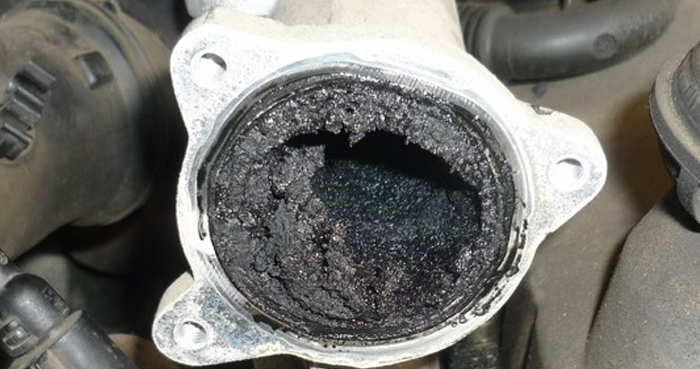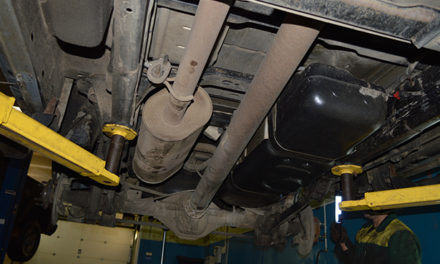Your vehicle’s Exhaust Gas Recirculation (EGR) system reduces harmful NOx emissions that exacerbate air pollution. If your EGR system becomes inoperative or just leaky, it could create problems with drivability, such as a rough idle, detonation, hard starting, stalling, and increased NOx or hydrocarbon emissions in your exhaust. Since some of these symptoms could mimic problems with the fuel delivery system, it’s important to rule that out as a potential cause before focusing on the EGR.
The most frequent symptoms of a faulty EGR are:
- Detonation – Also called pinging or spark knock, this occurs either when your EGR system simply isn’t working when the EGR valve is disabled, or when your exhaust port is clogged with carbon.
- Misfiring or rough idle – This happens when your EGR valve fails to close, causing exhaust to leak into your intake manifold. This could also trigger the trouble code for a random misfire, P0300, on the OBD-II system.
- Hard starting – This may occur when the EGR valve isn’t closing, thus resulting in a vacuum leak into your intake manifold.
Diagnosing Your EGR Issue
Since there are several different types of EGR valves on the road, you need to know what kind of valve your vehicle uses; this determines which test procedure you should follow. To figure out which valve you have, you can either inspect it, check the service manual, or look for an emissions decal on the underside of the hood. While you’re at it, you should also determine what type of vacuum controls you have – solenoid or ported vacuum switch. This information can also be found via examination, service manual, or emissions decal.
To track down your EGR problem, begin by using a code reader or scan tool to read the trouble codes. Look them up in your service manual, and on the diagnostic charts, to guide your next steps. The codes ranging from P0400 to P0409 are specific to your EGR system.
Generic Troubleshooting Procedure For EGR
- Do you detect detonation when you accelerate with a load? Check the ignition timing; if this is fine, then check your engine’s operating temperature. Other possible causes include the wrong type of spark plugs, running lean, excessive compression, or low-octane fuel. You’ll want to rule out every other possibility before zeroing in on the EGR system.
- Using a vacuum gauge, check your vacuum supply hose at 200-2500 rpm. If there’s no vacuum, you could have a loose hose, a faulty or blocked solenoid or ported vacuum switch, or a bad vacuum amplifier.
- Examine the EGR valve without removing it; when you rev the engine between 1500 and 2000 rpm, does the valve stem move? If not, then you probably have a bad valve. You might need a hand mirror to see the valve stem more easily.
- Remove and examine the EGR valve. Is the valve diaphragm ruptured? Does it have a leak? These are the most common causes of EGR valve failure.
- Look for clogging in the EGR passageway in the manifold. You could use a wire or pipe cleaner to probe for a blockage; if you find one, you might be able to dislodge it by poking at it carefully. In some cases, you’ll have to remove the manifold so it can be cleaned professionally.








![[ FITMENT ] : This injector Replacement for Chevrolet Silverado 1500 HD/2500 HD/3500 ,SSR 5.3L 2003-2004,Tahoe 4.8L/5.3L 2001-2006,Trailblazer EXT 5.3L 2003-2004,Express 1500/2500/3500,For GMC Envoy XL 5.3L 2003-2004,Sierra 1500 4.8L/5.3L/6.0L,Savana...](https://m.media-amazon.com/images/I/51QXpREylkL._SL100_.jpg)


